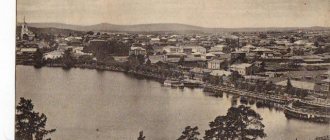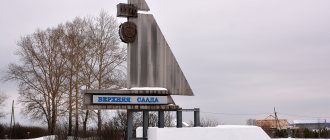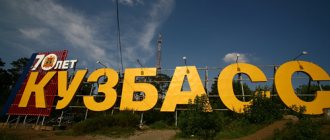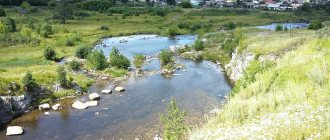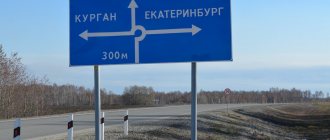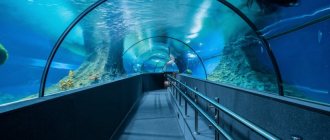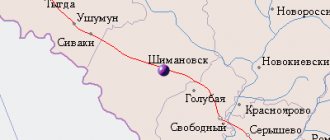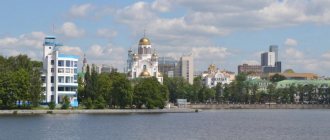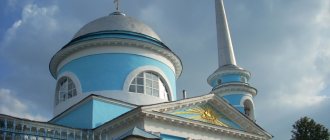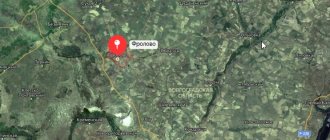History of Nizhnyaya Salda
This settlement arose in 1758 on the Salda River, the right tributary of Tagil, during the construction of an ironworks by Nikita Akinfievich Demidov It is interesting that at first Demidov planned to build a plant on the Sulem River, but due to the intervention of the Stroganovs, he preferred a place on the Salda River.
The name of the river, according to linguist A.K. Matveev, comes from the Mansi word “salt”, “salt” - “bast”, “bast”. The northeastern border of the linden distribution runs precisely through these places.
The founding date of the city is considered to be the moment the plant was launched on November 1, 1760 . The residents were immigrants from Central Russia, who were sent here for factory work. Experienced craftsmen were transferred from Nizhny Tagil factories.
The finished products were delivered to the Utkinskaya pier, from where they were sent in barges along the Chusovaya River to central Russia. For some time, the waterway along the rivers Salda, Tagil and beyond was used to reach eastern markets.
18 years after the launch of the Salda plant, it was decided to build another plant on the Salda River. This is how the Verkhnesaldinsky plant appeared, and Saldinsky began to be called Nizhnesaldinsky. At these two enterprises there was a full production cycle of iron production.
In 1825 (according to other sources, in 1829) puddling furnaces and experimental puddling began.
Under the manager of the plant I.F. braids was established at the Nizhnesaldinsky plant . To study this production, he traveled to Vienna. Improving the method of producing steel for braids, Makarov, long before Martin and Bessemer, independently and independently of Amosov, proposed a method for producing cast steel.
At one time, the manager of the Nizhnesaldinsky plant was Yakim Semenovich Kolnogorov (1812-1898). Being a serf and having no special education, thanks to his abilities he was able to achieve great heights in the service. Under him, the plant underwent modernization, the first puddling and welding furnaces were built. Under Kolnogorov, the production of railway rails . The plant became the main supplier of rails for the Nikolaev railway, which was under construction at that time. Demidov rails were considered the best in Russia. Rails made in Nizhnyaya Salda were used on the St. Petersburg-Warsaw Railway, as well as on the first tram tracks in St. Petersburg in 1903.
Since 1864, the rails of the Nizhnesaldinsky plant began to be hardened, which was previously considered impossible. The discovery was made by accident when a worker dropped a rail in the snow. The wear resistance of Salda rails has increased.
In 1871, the first blast furnace , working on ore from the Vysokogorskoye deposit in Nizhny Tagil. Then they built several more. The fourth blast furnace was built in the early 1890s by engineer V.E. Grum-Grzhimailo. Thanks to a well-thought-out design, this blast furnace operated without repair for more than 10 years, which was very significant at that time.
In 1875, a Bessemer factory . It consisted of two iron rotating retorts, which could each hold up to 300 pounds of cast iron, two iron cranes and other mechanisms.
The construction of the factory was carried out by Konstantin Pavlovich Polenov . He traveled abroad to study Bessemer. Back in the early 1870s, an agreement was concluded with the administration of the French Terre Noiro plant for the supply of drawings and equipment. In 1873, the equipment arrived in the Urals. The installation and production of the missing mechanisms took about a year and a half. On August 15, 1875, the ceremonial launch of the Bessemer workshop took place.
Later, Polenov developed his own method for producing Bessemer steel, which was called “Russian Bessemer steel.” The famous writer and journalist Vasily Ivanovich Nemirovich-Danchenko, who was traveling around the Urals at that time, visited the new workshop. He colorfully described this event in his book “Kama and the Urals”:
“We came to Nizhnyaya Salda to see the Bessemer temple. Otherwise, I don’t know what to call this grandiose production, which affects both the mind and the imagination equally. Here it is precisely the technical matter that takes on fabulous proportions, and the external situation is such that one can rather imagine oneself in some mysterious ancient temple. The Bessemer branch begins with a huge blast furnace. This is some kind of Babylonian structure. One side of it is a huge, solid shale rock, laid on top and on the other three sides with bricks.
The “furnace” is two huge halls, in one of which monstrous flywheels operate at the top. It seems that some kind of whirlwind picks you up and takes you God knows where. The air whistles in my ears. Some massive cast-iron organisms are breathing, whistling and roaring in front of you. A huge cast-iron wheel rotates with terrible force near you, the huge drives from it seem like the paws of some kind of iron monster. With a roar, the air rushes through the pipes made in the walls, iron chains ring and squeal - in the end, your head is cracking with pain and you don’t know how to quickly get out of this compartment.
Here is finally the main temple of Bessemer. A huge iron cave. The ceiling and floor are made of iron slabs, with thick fortified stone masonry on the sides. The dimensions are so large that when you enter here, you seem to be some kind of ant.
The further you go, the stronger and stronger the impression becomes. Finally, the sacrament was completed. The huge retort, this cast-iron stomach, which has digested the metal, slowly overturns with its flaming mouth, again throwing out whole fiery fountains, the golden splashes of which generously rain down on the walls and on the floor of the temple. She tips over even lower and pours dazzling white milk into the ladle, some kind of completely sunny liquid. Having released the iron and, as if completely exhausted, the retort completely somersaults with its mouth down. The solar liquid pours into the molds, filling them. Who would have thought fifteen years ago that iron could be turned into milk?
The Bessemer method of producing steel significantly reduced the cost of its production, as it required less fuel. Under the leadership of Polenov, 4 blast furnaces were built in Nizhnyaya Salda, and the plant began to have a complete production cycle. For the first time in Russia, at the Nizhnesaldinsk plant, Cowper devices began to be used to heat the blast. Also K.P. Polenov introduced new methods of rail production using heat treatment, which extended the life of steel rails.
In 1877, the first open-hearth furnace was launched at the plant. In 1896-1901, under the leadership of Konstantin Pavlovich Polenov and Vladimir Efimovich Grum-Grzhimailo, the largest rolling mill for the production of rails (“Mill - 800”) was built at the Nizhnesaldinsk plant. The project was commissioned by V.E. Groom-Grzhimailo in Düsseldorf, the reversing machine was purchased in Saarbrücken. The boilers, mill and roller tables were built in Nizhny Tagil, and electrical equipment was purchased in Budapest. In 1897, the railway was built and put into operation, and all the necessary equipment was delivered to Nizhnyaya Salda by a new mode of transport.
Thanks to the activities of K.P. Polenov and V.E. By the beginning of the 20th century, Grum-Grzhimailo plant was one of the technically advanced in the area. In terms of production capacity in the Urals, it was second only to the new Nadezhda plant (now Serov).
During the First World War, in addition to rails, the plant produced shell steel. In 1918, the Nizhnesaldinsky plant was nationalized. The following year, production of Bessemer steel was discontinued. During the Civil War, the plant almost did not work.
There were no direct military operations here during the Civil War At the same time, many residents of the factory village died at the hands of both. The retreating Red Eagles regiment, which included the future writer P.P., also made a stop in Nizhnyaya Salda. Bazhov. Later, Marshal of the Soviet Union F.I. Golikov recalled:
“We have been standing in Nizhnyaya Salda for several days. Whites are quiet. We took advantage of this - rested, slept, washed in the bathhouse. Nizhnyaya Salda is a large factory village. There is even a wooden sidewalk on the main street. The regiment is being replenished. Two companies of Chinese volunteers arrived, and at the Yasashnaya station a volunteer detachment of Comrade joined our regiment. Pavlova. We now have more strength and a better mood. Yesterday the regimental party conference took place. They talked about the tasks of the regiment and elected the leadership of the party collective. This afternoon an order was announced: we are moving on to Nizhny Tagil. It would be nice to live here for a day or two more.”
Near the Nizhnyaya Salda railway station, the Reds killed clergy and white sympathizers, including a 14-year-old teenager. After the arrival of the whites, executions and torture continued on their part. The prisons were overcrowded, and even several houses of local residents were used for these purposes. Some of those arrested were shot in Cedar Grove.
In 1922-1923, the plant was mothballed due to a lack of raw materials and fuel. At the beginning of 1924, the enterprise underwent partial modernization. By 1928, the production of rail fastenings was launched (they are still produced here today), but the rolling of the rails themselves at the plant ceased. In the 1980s, the Nizhnesaldinsky plant became exclusively rolling, and the blast furnace and open-hearth operations were closed.
On December 4, 1938, the workers' settlement received the status of the city of Nizhnyaya Salda.
In 1958, the Scientific Research Institute of Mechanical Engineering (NIIMash) - one of the leading enterprises in the creation of low-thrust rocket engines, which are used to orient space objects in space. All manned and cargo Russian spacecraft and orbital station modules are equipped with low-thrust rocket engines created in Nizhnyaya Salda.
Nowadays, the Nizhnesaldinsky Metallurgical Plant (NSMZ) and the Scientific Research Institute of Mechanical Engineering (NIIMash) are city-forming enterprises. To the north of the city, among the forests, the Verkhnesaldinsky State State Plant of Chemical Containers (or “Khimemkost” for short) is located. The enterprise was built in 1980 as a branch of the NPO “Machine-Building Plant named after M.I. Kalinin" from Sverdlovsk. Rocket technology for the army is produced here.
It is also worth noting that the famous composer Evgeny Rodygin . Today the population of Nizhnyaya Salda is 17 thousand people. By the way, neighbors call the residents of Verkhnyaya and Nizhnyaya Salda “Saldomane”.
Population[ | ]
| Population | |||||||
| 2002[8] | 2009[9] | 2010[10] | 2011[11] | 2012[12] | 2013[13] | 2014[14] | 2015[15] |
| 18 503 | ↘18 330 | ↘17 939 | ↘17 913 | ↘17 759 | ↘17 657 | ↘17 579 | ↗17 656 |
| 2016[16] | 2017[17] | 2018[18] | 2019[19] | 2020[20] | 2021[4] | ||
| ↗17 670 | ↗17 672 | ↘17 663 | ↘17 627 | ↘17 605 | ↘17 508 | ||
Sights of Nizhnyaya Salda
The most interesting sights of Nizhnyaya Salda are concentrated in the historical center of the city near the pond dam. It is here that the “heart” of the city is located, from which it began - the Nizhnesaldinsky plant. There was civil development around the plant, and old buildings from past centuries were preserved.
The decoration of the city is the Nizhnesaldinsky pond , created on the Salda River. It has the status of a hydrological natural monument. The pond is home to roach, bleak, crucian carp, perch, pike, ruffe, gudgeon, burbot, and bream.
On the left bank of the pond near the dam there is the Metallurgists Park . Before the revolution, this was the park of the plant managers K.P. Polenov and V.E. Grum-Grzhimailo, who loved to walk here with their guests. There are large gates leading into the park, built during the Soviet era. During the Soviet era, the park was decorated with sculptures. The park, which had fallen into disrepair, was reconstructed in 2022. It is noteworthy that the theme of cedars is reflected here (the cedar grove is one of the main symbols of the city, I will talk about it below). Images of cedars decorate the fence of the park; there is also a fountain in the form of cedar cones.
Near the park fence there is an obelisk to those who died in the Great Patriotic War . It was made by the Tagil workshops of the USSR Art Fund, sculptor A.V. Cooper. Delivered in 1967. In 1975, cast iron plates with the names of the dead Salda residents were installed around the monument.
Opposite the park is the Palace of Culture named after V.I. Lenin (Karl Marx St., 2), opened on May 1, 1931. The background to the construction is interesting. On the way from the trade union congress, Salda clay maker Evdokia Golovanova addressed a request for the construction of a Palace of Culture to Nadezhda Konstantinovna Krupskaya, the chairman of the Main Political Education, the wife of V.I. Lenin. And a few months later a decree was issued to begin construction. The building was built in the constructivist style, according to the most modern design at that time. However, this monastery of culture was named not after Krupskaya, but in honor of her husband. In front of the cultural center there is also a monument to V.I. Lenin, installed in 1968.
Between the recreation center and the pond dam there is Freedom Square . It still has paving stones laid in the middle of the 20th century. Behind the Palace of Culture building is the Metallurg Stadium .
If you walk a little further along Frunze Street, you will find yourself in front of the building of the Nizhnesaldinsky Museum of Local Lore (Lenina St., 1, tel. (34345) 3-14-72). The museum is located in the old stone house of merchant Vasily Gavrilovich Shubtsev, built in 1903. Shubtsev was one of the richest merchants of Nizhnyaya Salda, second in terms of capital turnover. He had several shops and sold fabrics. One of its stores was located in the house next to the museum. The building itself is amazing in its shape. The walls are not at right angles to each other; the plan of the house has an unusual rhombic shape. This is explained by the peculiarities of the layout - the house is located at an intersection, and the streets intersecting near it pass at an angle to each other.
The museum is named after the first director A.N. Antsiferova. The museum exposition tells about the history of these places from the beginning of the 18th century to the present day.
On the other side of the road stands the most beautiful old house in Nizhnyaya Salda (Frunze St., 2), built in 1910. Nowadays, this two-story building houses the administration of the Nizhnyaya Salda city district, and previously there was a city school here, then a school for working youth.
Nearby stands the monument “Defeated Imperialism” - in memory of those killed during the Civil War. It was installed on Freedom Square in 1921, author V.A. Kuznetsov. On the front side there is an inscription: “The bonds are broken. The chains are broken. Glory to the fallen heroes." Above are a star, a laurel branch and the dates 1917 and 1921. In 1977, cast iron plaques with the names of the fallen Saldinians were added.
Nearby is the grave of five partisans who died in the Civil War. The tombstone and fence were installed in 1925. The following names are listed on the monument: “Bogachev Vladimir Fedorovich - private, Gorbunov Mikhail Fedorovich - commander, Terentyev Alexander Efimovich - commander and commander of the Red Army, surname unknown.”
Behind the city administration building there are several more old houses in a row. Among them is the former government building. Some old houses were restored, but in a very dubious way - by covering them with siding. The farthest house is abandoned.
Near it, the Salda River is crossed by a bridge. From here the best view of the Nizhnesaldinsky Pond dam . And on the other side, on the territory of the plant, the blast furnace preserved there is clearly visible.
600 meters from this bridge along Engels Street stands the Church of Alexander Nevsky (Engels Street, 60). The stone three-altar church was built on the initiative and under the leadership of the manager of the Nizhnesaldinsky plant K.P. Polenova. According to legend, lightning often struck this hill, leading to fires, and Polenov decided to build a church here and install a lightning rod on it.
The church was built with donations from factory workers, in memory of the abolition of serfdom. The design of the church in the Roman-Byzantine style was created by the St. Petersburg Academy of Arts, the architect was S.S. Kozlov. Construction began in the mid-1890s. The construction was supervised by K.P. Polenov, and after his departure from 1902 V.E. Grum-Grzhimailo. The church was painted by artist V.A. Kuznetsov. It is interesting that French tiles are laid on the floor of the temple, apparently ordered in France by Grum-Grzhimailo during his trip abroad (except for the altar part, laid out of Tagil marble). This tile has survived to this day and can be seen on the floor. In some places the tiles are chipped and inscriptions in French are visible on the reverse side.
The church was consecrated on May 24, 1905. In March 1930 it was closed. The building housed OSOVIAKHIM, then a club and a cinema. The bell tower was dismantled. Later the building stood abandoned. In 1989 it was returned to believers. Now the church has been restored and is functioning. It is an architectural monument of the early 20th century.
But let's go back to the pond dam . Interesting fact: in 1868, during repairs, a cylinder with a kind of message to descendants was placed in the Nizhnesaldinskaya dam at the right main pillar. A similar time capsule with historical documents was accidentally found in Visimo-Utkinsk and transferred to the Nizhny Tagil Museum of History and Local Lore, where it can be seen among the exhibits. Unfortunately, during the construction of the new dam in 1956, the time capsule was not remembered. So it remained in the body of the dam, or maybe it was completely lost forever. In the early 1960s, Salda local historians tried to search for the capsule, but the plant management stopped them. By the way, the modern dam stands apart from the old one. The river course was also changed.
Crossing to the other side, you will see the modern five-story management building of the Nizhnesaldinsky Metallurgical Plant (Engelsa St., 1). In front of it stands a monument to metallurgists K.P. Polenov and V.E. Grum-Grzhimailo .
On the other side of the road you can see the old factory administration building with columns. It is similar to a similar building in Verkhnaya Salda. There are several memorial plaques on the building, reminiscent of the fact that they worked in this building:
- K.P. Polenov - an outstanding organizer, metallurgist, plant manager from 1864 to 1902;
- V.E. Grum-Grzhimailo (from 1886 to 1902) - a talented engineer, metallurgist;
- V.D. Zuev is the first “Soviet” director (from 1918 to 1922).
Two signs at once report that in the 1930s the plant was visited by People's Commissar of Heavy Industry Sergo Ordzhonikidze. Another one reminds us that here is the birthplace of the Russian method of Bessemer for low-silicon cast iron, discovered by K.P. Polenov in 1876.
Then the road goes along the wall of the plant on one side and the pond on the other. After 500 meters from the plant administration, it leads to the building of the St. Nicholas Church (St. Nicholas the Wonderworker) (Rosa Luxemburg St., 2). Alas, she was even less fortunate than the Church of Alexander Nevsky.
St. Nicholas Church was founded in 1826, built at the expense of the factory owners Demidovs. It was built in the style of Russian classicism according to the design of the talented Tagil architect Alexander Petrovich Chebotarev (according to another version, the architect was E.I. Dimert). The church building formed a single ensemble with the factory buildings; it is visible in many old photographs of the factory. The church was consecrated in 1834. The stone church had three altars and was decorated with columns. It formed a single ensemble with the buildings of the Nizhnesaldinsky plant.
Every May, a religious procession was held from the St. Nicholas Church to the Verkhnesaldinsky plant. On the eastern altar wall you can see the dates 1828-1928, which were placed on the 100th anniversary of the church. The interior was painted by serf artists Bazhenov and Arefiev, who studied in Italy.
It is interesting that in the past a chiming clock was installed on the bell tower of the church. According to legend, this watch was brought from Holland by Peter I and presented to Demidov. According to another version, they were made by Ural craftsmen. In the middle of the 18th century, the clock broke down and was inactive for a long time. The mechanism was disassembled and stored for many years at the Nevyansk plant, until in 1771 Demidov sent the talented Tagil mechanic Yegor Kuznetsov-Zhepinsky to repair them. He “assembled the clocks he inherited from the Nevyansk plant, reattached them, and actually put them into operation at the Nizhnesaldinsk plant, and they work pretty well.”
In 1930 the church was closed. The building was used as a canteen, then a machine and tractor station and a garage were located here. The building suffered significant damage, the interiors and paintings were almost completely lost, and the bell tower, with those who walked on it until the church closed, was demolished for hours. In 2015, while clearing the ruins at the site of the former bell tower, mangled elements of an ancient clock mechanism were discovered. Nowadays, the church building stands behind a concrete fence and is gradually being restored.
The writer’s father D.N. conducted services in the St. Nicholas Church for the last two years of his life. Mamin-Sibiryaka, Narkis Matveevich Mamin. K.P. facilitated the Mamins’ move from the Visimo-Shaitansky plant to Nizhnyaya Salda. Polenov, with whom they were friends.
In the past there was a cemetery near the church. Polenov's wife Maria Alexandrovna and his daughter are buried here. Narkis Matveevich Mamin also found his final peace here. The sketch of the tombstone was made by D.N. himself. Mamin-Sibiryak. Nowadays, this sketch can be seen in the Nizhnesalda Museum. The graves have not survived. Recently, at the site of the conditional grave of N.M. A wooden cross was erected for my mother.
Across the road from St. Nicholas Church is the building of the first two-class Nizhny Salda school (Parizhskaya Kommuny St., 2).
A little further, one house away, there is the city children's library named after. D.N. Mamin-Sibiryak (Paris Commune St., 6). It was here that N.M. lived his last years. Mamin, serving as a priest in St. Nicholas Church. Writer D.N. Mamin-Sibiryak came to his father in 1877 and lived in Nizhnyaya Salda for about a year. Here he met his first wife, Maria Yakimovna Alekseeva.
There is a memorial plaque on the house. Alas, after renovation the building lost its historical appearance. By the way, library staff are conducting a tour “The House Where the “Singer of the Urals” Lived.” Sign up for a tour by phone: (34345) 3-14-76. However, the library is closed on weekends.
The most distant attraction from the center of Nizhnyaya Salda is the cedar grove . We, ural experts, probably liked this place the most. You are unlikely to find anything like this within the city limits in the Urals.
In the past it was a natural cedar forest, later cultivated. In the 1880s, a settler from the Vyisky plant, Selivan Sannikov, was given a building plot in a cedar forest. But instead, he removed the windfall, cleared the clearings, erected a fence and began to take care of the grove. Nowadays, with the total cutting down of green areas in cities and infill development, this is unthinkable. Later, half of the cedar grove was bought from Sannikov by the artist Vladimir Aleksandrovich Kuznetsov (1874-1960), where he built a workshop.
In 1905, meetings of workers of the Nizhnesaldinsky plant took place on the territory of the grove. During the terrible years of the Civil War, dramatic events unfolded here. The Whites killed several dozen local residents here. At the site of the execution, on the edge of the grove, near the pond, there is a monument. It is clear that no one has been taking care of him lately. The monument to the victims of war is gradually being destroyed.
In the grove there are old spreading cedars several hundred years old. The cedars planted in the 1960s also gained strength, when the grove was declared a botanical natural monument of the Sverdlovsk region. At the same time, a fence was erected around the grove and protected from uninvited visitors and those who wanted to profit from pine nuts. In the 1990s, the fence was gone, and access to the cedar grove became free. Recently the cedar grove was fenced off again, but access was not blocked. You can walk in it freely, but respecting nature.
Infrastructure
General information
The city has hospitals, clinics, fire stations, a police station, a post office, two branches of Sberbank and several other banks.
Culture, religion and sports
The city has two Orthodox churches (Alexander Nevsky and St. Nicholas Church), the Nizhnesaldinsky Palace of Culture, the Museum of Local Lore, city and factory libraries, an indoor hockey court, and two stadiums.
Education
The city has three secondary schools and a gymnasium, several kindergartens and a vocational school.
How to get to Nizhnyaya Salda?
The city of Nizhnyaya Salda is located in the Sverdlovsk region, 52 km northeast of Nizhny Tagil or 180 km north of Yekaterinburg (by road). From Yekaterinburg you need to go along the Serovsky tract and stop in Nizhny Tagil. The Sverdlovskoye Highway smoothly turns into Festivalnaya Street, along which you need to drive to the end, then turn right onto the Eastern Highway, which turns into the highway to Verkhnyaya Salda. After passing Verkhnyaya Salda, after 10 km you will find yourself in Nizhnyaya Salda. Along the way, it’s worth getting acquainted with the sights of Verkhnyaya Salda.
You can also get there by public transport. Buses from Yekaterinburg and Nizhny Tagil, as well as trains from Tagil and Alapaevsk go here.
Pavel Raspopov
Used literature: Kurochkin Yuri. Memorial trails. They were different years. - Sverdlovsk, 1964. Nizhnyaya Salda - WikipediaPanoramic tour of Nizhnyaya SaldaSite "Salda History" Sokolova Galina. A watch given to Demidov by Peter I was found in Nizhnyaya Salda // Regional Newspaper, 12/09/2015. Sokolova Galina. The Cedar Grove of Nizhnyaya Salda now has an owner // Regional newspaper, 09.17.2015. Tankievskaya I.N., Ustyantsev S.V. Salda ironworks. - Ekaterinburg, 1993.
See also:
- Old photos of Verkhnyaya and Nizhnyaya Salda
- The city of Verkhnyaya Salda. History and sights
